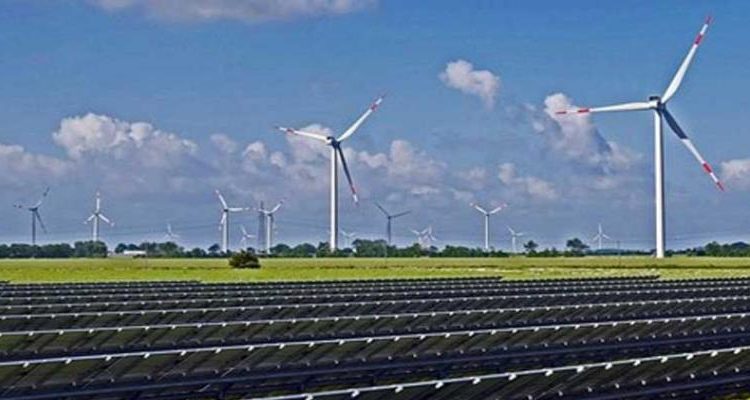
The plan for Cuba’s renewable energy sources
HAVANA – At this year’s halfway point Alejandro Gil, Cuba’s head of the economy, declared that the establishment of renewable energy sources is the country’s second most important economic strategy. The exploration for oil is ranked first. His statement indicates the importance given the search for alternative energies not linked to petroleum. But Minister Gil also warned the National Assembly of Popular Power that the “generation of electricity from renewable energy sources (FRE) is underperforming the plan’s expectations.”
The goal
Cuba’s National Economic and Social Development Plan for 2030 suggests that almost a quarter of the electricity generated (24 percent) must come from renewable sources. Other nations in the region that are in better economic conditions and with more natural resources have set higher goals: for example, Bolivia expects 46 percent by 2020, and Chile, 65 percent in the next 11 years.
Cuba’s objective would be to increase the capacity of renewable energy sources to 2,269 megawatts of electricity generated, distributed almost evenly between bioelectric plants, photovoltaic and wind farms. This would be done, said Tatiana Amarán Bogachova, director general of the Ministry of Energy and Mines, using the country’s own funds and participation from foreign investors.
Conservative calculations estimated a $4 billion investment coming from foreign coffers to make these projects possible, as published last year in the Portfolio of Opportunities for Foreign Investment.
To date photovoltaic solar energy has seen the greatest advance in the plan. According to the latest data, the 67 parks currently operating generate approximately 156.6 megawatts of electricity. What is installed to date represents one-fifth of what was conceived for 2030, said Abel Concepción Díaz, FRE generation director of the National Electrical Union.
Meanwhile, more than $300 million in self-financing and loans will pay for another five major investments underway: two wind farms in the north of Las Tunas province, and three bioelectric plants associated with sugarcane mills.
Obstacles
Late last year Havana lodged a complaint at the United Nations because of the difficulties experienced in acquiring spare parts for the Gibara II wind farm in Holguin. It blamed the U.S. commercial and financial blockade for blocking the transactions. The Washington blockade is also felt in how it restricts potential investors, as was confirmed by Nicolás Barnier, director of the German wind energy company, Corporate Energies.
This climate of instability is cause for the delays experienced by enterprises that should set the standards such as the Ciego de Ávila bioelectric plant and the wind farms in northern Las Tunas. Right from the start of construction of the plant located in the central part of the Island, Andrew MacDonald, president of Biopower, said that “the biggest stumbling block facing the development of the project has been the financing.” The U.S. blockade, he said, has “strangled” European financing and “other obvious sources.”
However, press reports have also pointed to other internal problems that have aggravated the situation under the direction of Biopower, S.A., a co-venture comprised of British Havana Energy and Zerus (of the Azucarero Azcuba Group). The partners are now accelerating the project that finds itself more than halfway completed.
The path for the two largest wind farms in the country — Herradura I and II — will be much longer. Plans to build them began in 2013 when a Chinese company, Goldwind International Holdings Limited, announced the signing of a contract with Energoimport, a unit of the Electrical Union, for the sale of 34 wind turbines whose generation capacity would be 51 megawatts.
At that time it was anticipated that the turbines would arrive in Cuba by the end of 2014, and their installation would be completed in September of the following year. However the country’s financial conditions became dire and the terms were extended; hence nothing happened for almost three years. In August 2016 a new deadline was established: the first of these parks, the Herradura 1, would begin work between the end of 2017 and the beginning of 2018.
But not till March 2019 was the first of 34 foundations on which the wind turbines will be placed was completed. Without mentioning a specific date, the Council of Ministers most recent evaluation of Herradura I was that it was at 44 percent completion, and reiterated the desire to install and synchronize to the National Electroenergetic System the 22 wind turbines that are already on Cuban soil.
At the end of 2018 in Cuba, electricity generated from the wind and sun reached, according to the National Office of Statistics (ONEI), 313.3 gigawatt. That means a growth, compared to the previous year, of 190 percent. Said that way it seems like a lot, but when contrasted with the total generated, it is not that much, since when adding the biomass, it is only 4.6 percent.
In 2013, renewable energy sources in the national energy matrix reached 4.3 percent. Therefore in a five year period its growth was just 0.3 percentage points. To reach the objective set in the 2030 National Plan the rate of increase would have to climb up to 2.2 percent per year.
The country’s current depleted oil supply has placed advancement in this area at the highest priority. It was one of the agenda items at the September meeting of the Council of Ministers. However, this should not be the only reason to achieve this.
Four years ago, when the situation was not as tense as it is now, the Cuban Parliament cautioned about the lack of culture in the use of renewable energy sources. It described as “a waste businesses who do not exploit the potential offered by universities and research centers who study the use of renewable energy sources.”
The urgency for fuel, more or less transitory, may have helped force an increase in the sensitivity among Cubans to renewable energy. But that sensitivity would really take root if citizens were more concerned with their own future, and that of the rest of humanity.


